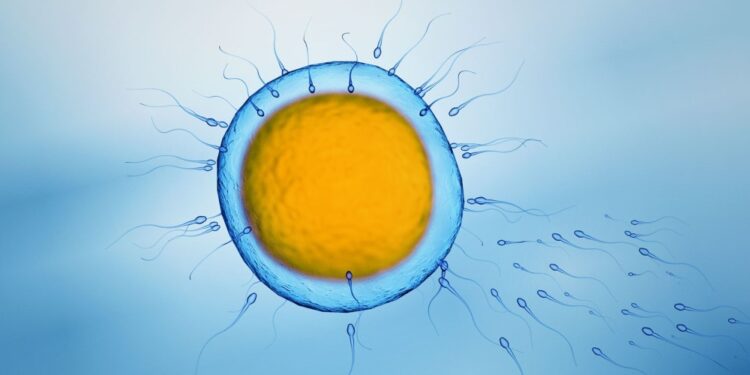Most couples desire to have a baby boy. However, conceiving a baby boy is not always as simple as it seems. In fact, according to science, the female chromosome is much more resilient than the male one. According to biology, births are male-biased, meaning that there are slightly more boys being born every year than girls. Statistics by the World Health Organisation (WHO) indicate that the ‘natural’ sex ratio at birth ranges from around 103 to 107 boys per 100 girls.
This, is however, on a global perspective. In individual countries, the gender ratio differs as some countries have slightly more women than men. The sex ratio varies from one country to another. It is important to note that the sex ratio is affected by aspects such as life expectancy and survival at birth, where women are said to live longer than men, even at childhood between infancy and the age of five.
Why the survival rate of boys is lower than that of girls
Here are some of the reasons why girls have a higher shot at survival than boys.
- Boys are at higher risk of birth complications. Comparisons of the mortality rates between girls and boys show that boys are at a higher risk of pre-term births, asphyxia, birth defects and heart anomalies.
- The share of boys born before full-term pregnancy (pre-term birth) is higher than for girls as they tend to have a higher birth weight than girls, which can increase the risk of waiting to term to deliver. This, therefore, means that more boys are induced before the end of the pregnancy term, reducing their chances of survival at birth as well as increasing risks of complications during birth.
- Although boys are, on average, heavier than girls at birth, they are less physiologically mature at birth, which means they are at higher risk of having delayed physiological function – such as lung function – and adverse neurological outcome.
- Boys are also at a higher risk of infectious diseases. According to different researches, boys are also at higher risk of infectious diseases such as syphilis, malaria, respiratory infections, tetanus and diarrheal diseases.
- Overall, boys have a weaker immunity, and this can be attributed to the Y-chromosome in boys that increases their vulnerability. Biologically, males have the XY chromosome and females have XX chromosome. The X chromosome has a larger number of immune-related genes. Also, the testosterone hormone in males weakens their immune system.
How to increase chances of getting a baby boy
Biologically, the probability to getting a baby girl is higher than getting a boy because of the chromosome of the parents, with male being XY and female XX. Additionally, the female chromosome in the male sperm cells are more resilient, hence have a higher chance of fertilising the female egg (ovum). According to fertility experts, the male sperm cells carrying the Y chromosomes are smaller, lighter, faster and more fragile.
While the female sperm cells carrying the X chromosomes, are thought to be bigger, heavier and slower, but more resilient. It is because of this reason that fertility experts say that the gender of the baby have much to do with the timing of intercourse in relation to ovulation, the stress levels of the father, environmental exposure, as well as fertility interventions.
You are likely have a boy if you do the following.
1. Be keen on your ovulation date
Engage in intercourse or use artificial insemination close to the ovulation date or the actual date of ovulation. The closer the date to ovulation (preferably a day or two), the higher the probability of conceiving a boy. Experts say that this will give the male sperm cells carrying the Y chromosome a greater shot to reaching the egg faster than the female sperm cells carrying the X chromosome.
2. Avoid acidic foods, instead eat more alkaline foods
According to the pH diet theories, you can shift the pH of your body toward being more acidic or more alkaline based on what you eat. Taking foods that are rich in alkali such as whole fruits and vegetables foods favour the Y chromosome and thus, tend to survive much longer and swim faster.
3. You are younger
According to fertility experts, the younger you are the better chances you might have a boy. Younger men generally have a higher sperm cell count, increasing their chances of a male sperm cell reaching the egg. On the other hand, younger women have more copious, alkaline-quality cervical fluid, which also favours the conception of boy.
4. Avoid being stressed
Stressful situations such as work or environmental stresses like tight clothes and heat lower the sperm count in males. This reduces the chance of the male chromosome reaching the egg.
5. Pre-implantation genetic diagnosis (PGD)
Pre-implantation genetic diagnosis (PGD) is a method developed to help couples who have gone through genetic testing and know they are carriers of serious genetic disorders. Used in conjunction with in-vitro fertilisation (IVF), doctors extract one cell from the rapidly dividing embryo fertilised and examine it to determine gender. Only embryos of the desired sex will be implanted in a woman’s uterus.
6. Sperm sorting gender selection
Sperm sorting gender selection technique involves separating girl-producing sperm (X-sperm) from boy-producing sperm (Y-sperm) in the lab and then implanting the desired gender sperm into the woman’s uterus via intrauterine insemination (IUI) or using the chosen sperm to fertilise an egg in vitro.
7. Boxers vs. briefs
Lab studies have found that X-carrying sperm cells can withstand slightly warmer temperatures than Y-carrying sperm. Based on this, for those that want to have a boy, men are encouraged to wear boxers. Briefs hold the testicles closer to the body, raising scrotum temperatures. Keep in mind that when you intentionally attempt to increase scrotum temperatures, you are at risk of lowering the overall sperm count.




































































































































































































